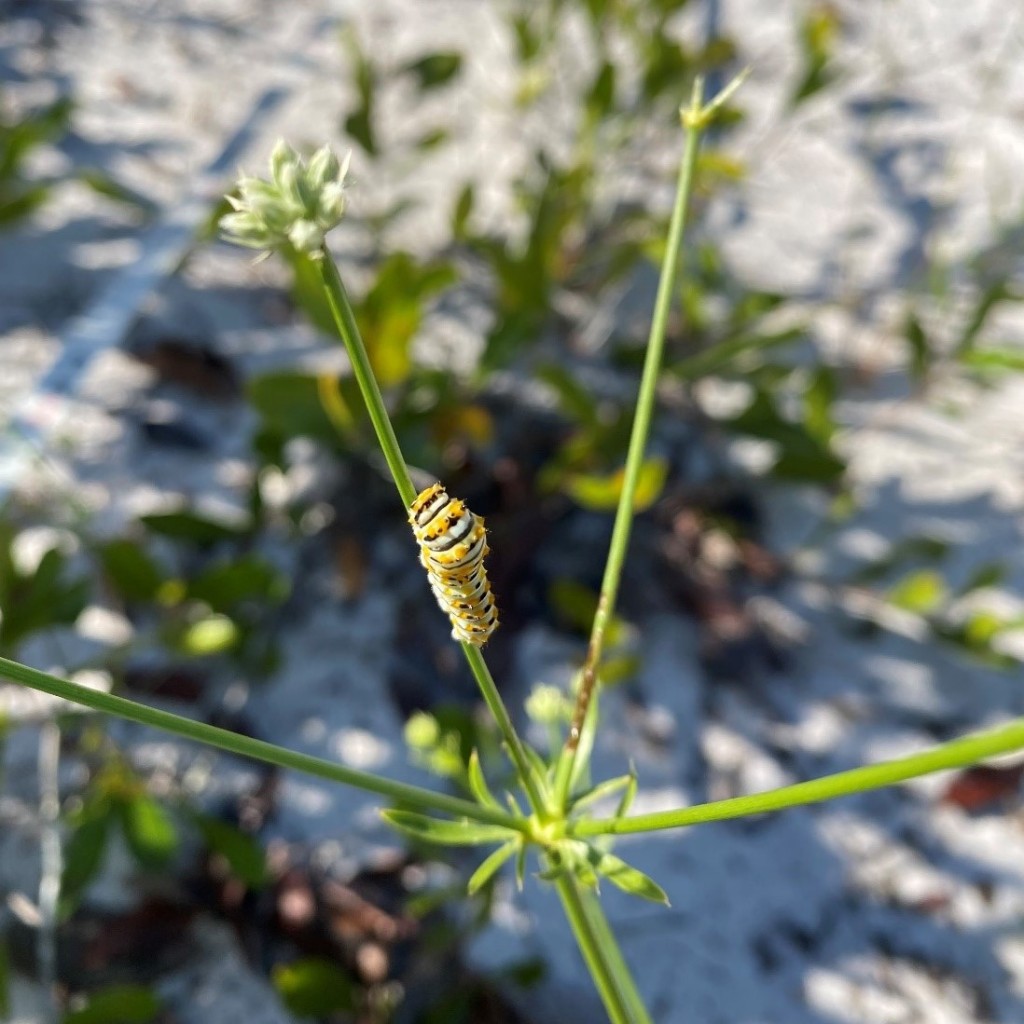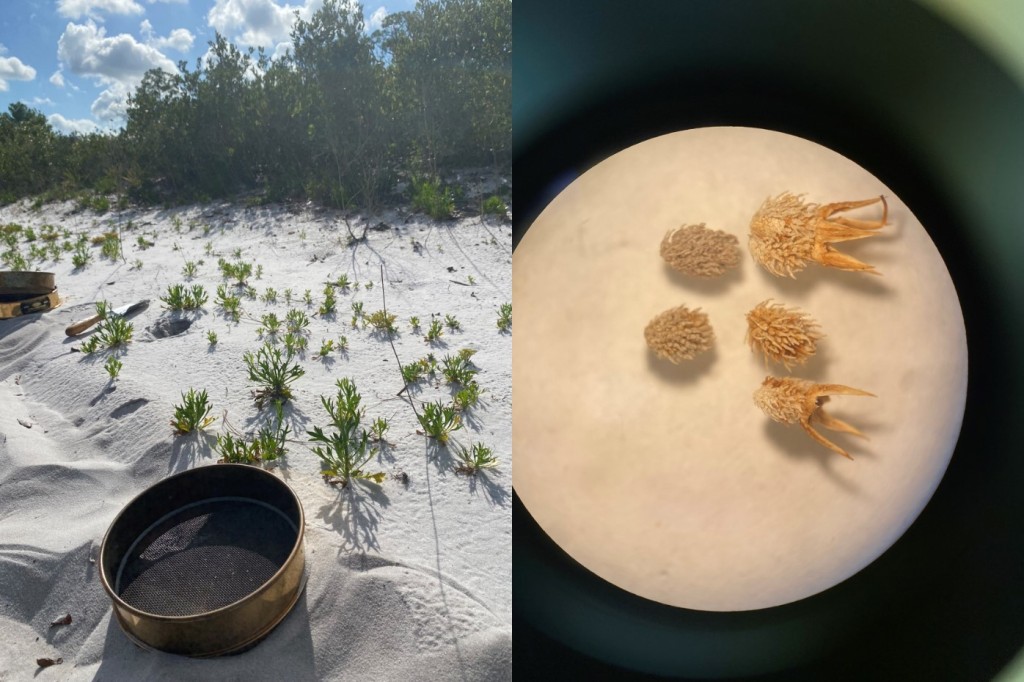
Author: Iris Kennedy
Around 2 million years ago when the sea level was higher, the majority of Florida was completely underwater except for a region of sandy islands. Those sandy islands are now known as the Lake Wales Ridge, a ribbon of ancient sand dunes forming a backbone down peninsular Florida. Because this region has been above sea level for so long, many unique plants and animals have evolved there and it is now home to many endemic species. An endemic species is found only in one region and nowhere else. The Lake Wales Ridge has one of the highest levels of endemism in North America and is home to many unique and rare species found nowhere else on Earth.
Wedge-leaf Button Snakeroot (Eryngium cuneifolium) is one of the rare plants endemic to the Lake Wales Ridge, and only found in Highlands County, Florida. Dr. Sterling Herron, a research assistant in Archbold’s Plant Ecology Program, describes Wedge-leaf Button Snakeroot as “the rarest member of the carrot family, which can be detected from a carrot-spice scent in the fall.” The small white flowers of this plant bloom throughout Fall and are often visited by Black Swallowtail butterflies.
Wedge-leaf Button Snakeroot often grows in ‘gaps’ in rosemary scrub, which are open areas of bare sand. It also can be found growing along sandy fire lanes. Because of its preference for gaps, Wedge-leaf Button Snakeroot benefits from disturbances such as fires. Fires are an incredibly important part of the Florida scrub ecosystem, as they open up the landscape and create gaps where native plants like Wedge-leaf Button Snakeroot prefer to grow.

Wedge-leaf Button Snakeroot populations are able to recover after fire because of their soil seedbanks. Iris Kennedy, the Maxwell-Hanrahan Plant Ecology Intern explained, “A soil seedbank forms when seeds are dropped by plants and do not germinate immediately, instead remaining dormant in the soil to germinate at a later time.” The seed bank allows populations of Wedge-leaf Button Snakeroot to regenerate after experiencing a disturbance, like a fire. Kennedy is collecting data on the sizes of these seedbanks in the scrub. “Because of the larger size of Wedge-leaf Button Snakeroot seeds, they are relatively easy to sift out of the sand. This provides a valuable opportunity to investigate the way Wedge-leaf Button Snakeroot seeds are distributed in both natural and disturbed areas.” Kennedy hopes that studying Wedge-leaf Button Snakeroot seed banks, especially in disturbed roadsides, will contribute to the conservation of this federally endangered plant.
With so few populations of Wedge-leaf Button Snakeroot left, scientists at Archbold are always on the lookout for more wild populations. If you find any Wedge-leaf Button Snakeroot on your property, please reach out to the Archbold Plant Ecology program (contact information on our website http://www.archbold-station.org). Protecting all the natural treasures in Highlands County may seem like a daunting task, but step one is simply recognizing and appreciating the value of what we have.
